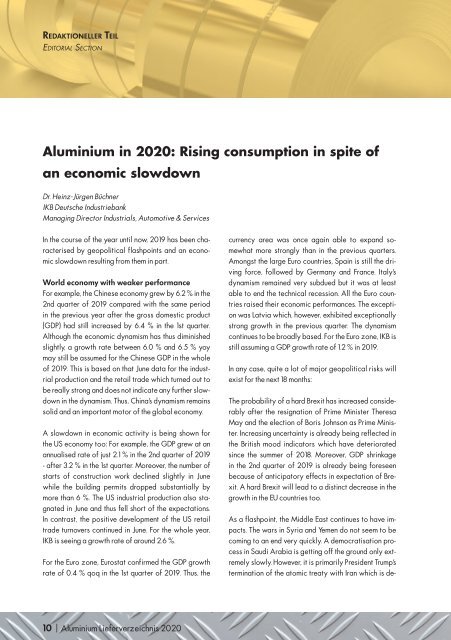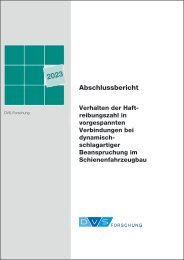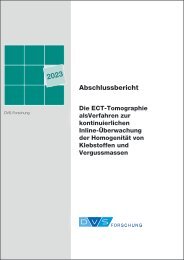You also want an ePaper? Increase the reach of your titles
YUMPU automatically turns print PDFs into web optimized ePapers that Google loves.
REDAKTIONELLER TEIL<br />
EDITORIAL SECTION<br />
<strong>Alu</strong>minium in <strong>2020</strong>: Rising consumption in spite of<br />
an economic slowdown<br />
Dr. Heinz-Jürgen Büchner<br />
IKB Deutsche Industriebank<br />
Managing Director Industrials, Automotive & Services<br />
In the course of the year until now, 2019 has been characterised<br />
by geopolitical flashpoints and an economic<br />
slowdown resulting from them in part.<br />
World economy with weaker performance<br />
For example, the Chinese economy grew by 6.2 % in the<br />
2nd quarter of 2019 compared with the same period<br />
in the previous year after the gross domestic product<br />
(GDP) had still increased by 6.4 % in the 1st quarter.<br />
Although the economic dynamism has thus diminished<br />
slightly, a growth rate between 6.0 % and 6.5 % yoy<br />
may still be assumed for the Chinese GDP in the whole<br />
of 2019. This is based on that June data for the industrial<br />
production and the retail trade which turned out to<br />
be really strong and does not indicate any further slowdown<br />
in the dynamism. Thus, China’s dynamism remains<br />
solid and an important motor of the global economy.<br />
A slowdown in economic activity is being shown for<br />
the US economy too: For example, the GDP grew at an<br />
annualised rate of just 2.1 % in the 2nd quarter of 2019<br />
- after 3.2 % in the 1st quarter. Moreover, the number of<br />
starts of construction work declined slightly in June<br />
while the building permits dropped substantially by<br />
more than 6 %. The US industrial production also stagnated<br />
in June and thus fell short of the expectations.<br />
In contrast, the positive development of the US retail<br />
trade turnovers continued in June. For the whole year,<br />
IKB is seeing a growth rate of around 2.6 %.<br />
For the Euro zone, Eurostat confirmed the GDP growth<br />
rate of 0.4 % qoq in the 1st quarter of 2019. Thus, the<br />
currency area was once again able to expand somewhat<br />
more strongly than in the previous quarters.<br />
Amongst the large Euro countries, Spain is still the driving<br />
force, followed by Germany and France. Italy’s<br />
dynamism remained very subdued but it was at least<br />
able to end the technical recession. All the Euro countries<br />
raised their economic performances. The exception<br />
was Latvia which, however, exhibited exceptionally<br />
strong growth in the previous quarter. The dynamism<br />
continues to be broadly based. For the Euro zone, IKB is<br />
still assuming a GDP growth rate of 1.2 % in 2019.<br />
In any case, quite a lot of major geopolitical risks will<br />
exist for the next 18 months:<br />
The probability of a hard Brexit has increased considerably<br />
after the resignation of Prime Minister Theresa<br />
May and the election of Boris Johnson as Prime Minister.<br />
Increasing uncertainty is already being reflected in<br />
the British mood indicators which have deteriorated<br />
since the summer of 2018. Moreover, GDP shrinkage<br />
in the 2nd quarter of 2019 is already being foreseen<br />
because of anticipatory effects in expectation of Brexit.<br />
A hard Brexit will lead to a distinct decrease in the<br />
growth in the EU countries too.<br />
As a flashpoint, the Middle East continues to have impacts.<br />
The wars in Syria and Yemen do not seem to be<br />
coming to an end very quickly. A democratisation process<br />
in Saudi Arabia is getting off the ground only extremely<br />
slowly. However, it is primarily President Trump’s<br />
termination of the atomic treaty with Iran which is de-<br />
10 | <strong>Alu</strong>minium Lieferverzeichnis <strong>2020</strong>
REDAKTIONELLER TEIL<br />
EDITORIAL SECTION<br />
veloping into a geopolitical powder keg. Iran’s threat to<br />
close the Strait of Hormuz through which a substantial<br />
proportion of the crude oil exports from the Gulf region<br />
is shipped may lead to an explosion. After attacks on<br />
several tankers, the seizure of ships and the shootingdown<br />
of drones, the uncertainty has increased enormously.<br />
Of course, this is causing high volatility in the<br />
crude oil prices (see Fig. 1).<br />
Brent Blend oil price / in US-D per barrel<br />
140<br />
120<br />
100<br />
80<br />
60<br />
40<br />
20<br />
0<br />
2013 2014 2015 2016 2017 2018 2019<br />
Source: Bloomberg<br />
Figure 1<br />
After the global crude oil demand rose by 1.4 mbd (= million<br />
barrels per day) in 2018, a need rising to 100 mbd is<br />
being seen for 2019. Since the increase in the crude oil<br />
production outside OPEC is turning out to be stronger<br />
than the rise in global consumption, this is reducing the<br />
need for the OPEC production by 0.9 mbd. The current<br />
production quantity corresponds to this need. An escalation<br />
in the Gulf region as a consequence of the military<br />
manoeuvres would lead to temporary bottlenecks in<br />
supply. For the time being, IKB is nevertheless assuming<br />
a crude oil price between US-D 60 and US-D 70 per<br />
barrel of Brent - with a high potential for a rise in the<br />
event of any military conflagrations.<br />
However, impacts are resulting from the trade wars in<br />
particular. On the part of the US government, the threat<br />
of punitive tariffs and further sanctions is increasingly<br />
being used as a means of domestic political profiling.<br />
Even treaties concluded in the recent past (see Mexico)<br />
are no longer reliable. Moreover, the conflict with China<br />
is increasingly having impacts on the most important<br />
partner countries. Thus, some market observers are asking<br />
themselves whether treaties and agreements with<br />
the USA make any sense whatsoever if a tweet makes<br />
them obsolete once again at short notice.<br />
Important buyer markets are placing their faith<br />
in lightweight construction<br />
The expectations in relation to the production of light<br />
vehicles (piece weight: up to 2.8 t) are assuming an annual<br />
output between nearly 100 million and up to 110<br />
million units in the next decade. In this respect, quantities<br />
of 105 million and more should be achieved from<br />
2025. Only a sales volume 2 - 3 % below the level in the<br />
previous year is emerging for 2019.<br />
In relation to the total production, there are just small<br />
differences between the average annual production<br />
and the resulting stock of the motor vehicle fleet at the<br />
end of the forecast period. The majority of the growth<br />
is taking place outside Europe and the USA. China<br />
should exceed the sound barrier of 30 million produced<br />
light vehicles in 2022 at the latest.<br />
While various consulting companies, industrial associations<br />
and forecasting firms have made largely<br />
identical basic estimations of the development of the<br />
production and the sales, there are greater divergences<br />
with regard to the estimation of the advance of an alternative<br />
drive technology to the combustion engine. In<br />
relation to the drive, IKB is initially seeing a sharp rise<br />
in the significance of hybrid drive forms while pure battery<br />
solutions will only reach any notable quantities after<br />
2025. However, in addition to the battery-operated<br />
drive, research activities are increasingly being directed<br />
at synthetic fuels as well as at drive forms such as<br />
the fuel cell. The stock of e-vehicles in the basic forecast<br />
is estimated at up to 15 % of the worldwide stock<br />
in 2030. In an optimistic forecast, 25 - 30 % is possible<br />
(see Fig. 2).<br />
<strong>Alu</strong>minium Lieferverzeichnis <strong>2020</strong> | 11
REDAKTIONELLER TEIL<br />
EDITORIAL SECTION<br />
Strong growth in the worldwide fleet stock of electric vehicles<br />
Forecast until 2030; in million<br />
140<br />
120<br />
100<br />
80<br />
60<br />
40<br />
20<br />
0<br />
2017 <strong>2020</strong> 2025 2030<br />
Trucks - PHEV Buses - BEV LCVs - PHEV<br />
LCVs - BEV PLDVs - PHEV PLDVs - BEV<br />
Remark: PLDV = Passenger light duty vehicle; LCV = light commerical vehicle; BEV = battery electric vehicle; PHEV = plug-in hybrid electric vehicle<br />
Sources: International Energy Agency<br />
Figure 2<br />
However, one necessary prerequisite is that the prices<br />
of batteries will continue to drop sharply. Only then will<br />
electric vehicles constitute an economically viable option<br />
in most countries in the second half of the <strong>2020</strong>s.<br />
In addition, it is still uncertain whether the necessary<br />
quantities of lithium and cobalt will be available to a<br />
sufficient extent.<br />
The use of an electric battery in a car makes the total<br />
weight rise even if the engine block and a few corresponding<br />
parts are dispensed with. However, increased<br />
lightweight construction is induced in order to counteract<br />
this and thus leads to a further rise in the utilisation<br />
of aluminium in cars.<br />
However, unchanged stimuli also continue to come from<br />
the construction sector. Not only does precisely housebuilding<br />
in important conurbations use aluminium in the<br />
facade segment but the utilisation of aluminium is also<br />
en vogue in the interior equipment. In the long term too,<br />
the great design-related diversity which can be achieved,<br />
for example, by anodised surfaces will be a factor<br />
in favour of the increased use of aluminium.<br />
In mechanical engineering, aluminium is being utilised<br />
increasingly also in certain segments such as robotics<br />
or the hand-guided tools; even if mechanical engineering<br />
in Germany should stagnate in 2019 or even register<br />
a slight dip: In the long term, the signs are indicating<br />
further growth, not least because of the fact that German<br />
manufacturers are global market and technology<br />
leaders in many sectors.<br />
Further processing of aluminium with a positive<br />
outlook<br />
The most important further processing segments will<br />
still register considerable rates of increase in the next<br />
few years too:<br />
The global production of cast aluminium rose from<br />
8 million t in 2000 to 19 million t in 2017 (see Fig. 3).<br />
Production of cast aluminium on a stable growth course<br />
Production of cast aluminium in million t<br />
20<br />
18<br />
16<br />
14<br />
12<br />
10<br />
8<br />
6<br />
4<br />
2<br />
0<br />
Sources: CAEF; World Census; IKB Research<br />
Figure 3<br />
Rest of the world<br />
China<br />
China’s production of cast aluminium was just 0.8 million<br />
t in 2000 but the Chinese aluminium foundries<br />
set a new record with 7.3 million t of cast products in<br />
2017: Within 17 years, the production of their aluminium<br />
foundries rose by a factor of nine. In the rest of<br />
the world, the production of cast aluminium increased<br />
from 7.2 million t to over 12 million t in 2017. In contrast,<br />
the global growth in the production of cast iron could<br />
mainly be attributed to a rise in the Chinese production<br />
with a stable production level in the rest of the world. In<br />
contrast, the production of cast aluminium rose in all the<br />
important regions of the world but at diverging growth<br />
rates. For example, the production levels in the USA,<br />
France and Russia stabilised between 2000 and 2017.<br />
In contrast, Japan and Italy registered growth rates of<br />
around 20 % in the same period and the German pro-<br />
12 | <strong>Alu</strong>minium Lieferverzeichnis <strong>2020</strong>
REDAKTIONELLER TEIL<br />
EDITORIAL SECTION<br />
duction even expanded by around 75 %. IKB is seeing<br />
a rise in the worldwide production of cast aluminium to<br />
over 20 million t per year by 2025 and around 8 million<br />
t of this will come from China. The European production<br />
of cast materials (including Turkey) should amount<br />
to around 5.5 million t. The German aluminium casters<br />
will contribute approx. 1.4 million t to this.<br />
A sharp increase in the production of extruded materials<br />
is to be expected precisely in Europe too. While the<br />
consumption of extrusion products in Europe was just<br />
2.6 million t in the post-crisis year 2010, it was already<br />
estimated to be 3.3 million t in 2017 (see Fig. 4).<br />
Consumption of extruded products in Europe; in million t<br />
4,0<br />
3,5<br />
3,0<br />
2,5<br />
2,0<br />
1,5<br />
1,0<br />
0,5<br />
0,0<br />
2010 2011 2012 2013 2014 2015 2016 2017 2018g 2019g <strong>2020</strong>g<br />
Sources: IKB Research, European <strong>Alu</strong>minium Association (25.05.2018)<br />
Figure 4<br />
g. = estimated<br />
By <strong>2020</strong>, the need in Europe should rise up to 3.5 million<br />
t. This will be borne not only by the construction<br />
industry as the main buyer segment but also, above all,<br />
by the vehicle industry (cars and commercial vehicles)<br />
as well as, to an increasing extent, by mechanical engineering<br />
and the aviation industry too. Since Europe is<br />
still a net importer of extruded parts, there is certainly<br />
the possibility of expanding the existing production locations<br />
or extending the capacity by modernising already<br />
existing presses.<br />
Positive future chances can be seen in the foil segment<br />
too. <strong>Alu</strong>minium foils for the food industry will profit<br />
from several trends in the future. On the one hand, the<br />
average household size will drop since, in particular,<br />
the proportion of single households will rise. However,<br />
this also implies smaller packaging sizes and thus a rising<br />
need for aluminium packaging. On the other hand,<br />
plastic packaging has come under very strong regulation<br />
and prohibition pressure. Because of the good barrier<br />
properties of aluminium foil, it could profit from this<br />
as a substitute.<br />
Rising consumption of aluminium to be expected<br />
Although the worldwide increase in the demand for aluminium<br />
in 2019 should be just approx. 1.5 %, a further<br />
rise in the demand for aluminium may be assumed in the<br />
long term.<br />
The trend towards e-mobility is becoming a growth driver.<br />
In 2025, we are seeing a total consumption of aluminium<br />
of 76 million t (see Fig. 5).<br />
e-mobility is driving the demand; world<br />
consumption of aluminium; in 1,000 t<br />
80.000<br />
70.000<br />
60.000<br />
50.000<br />
40.000<br />
30.000<br />
20.000<br />
10.000<br />
0<br />
2002<br />
2003<br />
2004<br />
2005<br />
2006<br />
2007<br />
2008<br />
2009<br />
2010<br />
2011<br />
2012<br />
2013<br />
2014<br />
2015<br />
2016<br />
2017<br />
2018p<br />
2019p<br />
<strong>2020</strong>p<br />
2021p<br />
2022p<br />
2025p<br />
Oceania America Africa China Asia without China Europe<br />
Sources: Metallstatistik; IKB Research p = forecast<br />
Figure 5<br />
In this respect, the average utilisation of aluminium in<br />
cars should rise up to as much as 200 kg. The total demand<br />
for aluminium in cars will be borne, above all, by<br />
structural components and the trend towards aluminium<br />
bodies. As a rule, the housings of electric batteries<br />
should also be fabricated from aluminium.<br />
China will continue to keep its dominant role in the global<br />
consumption of aluminium, possibly even to consolidate<br />
it slightly. However, we are also seeing a strong<br />
<strong>Alu</strong>minium Lieferverzeichnis <strong>2020</strong> | 13
REDAKTIONELLER TEIL<br />
EDITORIAL SECTION<br />
catching-up process, above all in other Asian threshold<br />
countries (India, Indonesia, Vietnam etc.). In addition,<br />
IKB is seeing a recovery in North America. Primarily in<br />
aircraft construction, the utilisation of aluminium should<br />
rise once again at the expense of composite materials.<br />
Similarly, the utilisation of aluminium in Europe is continuing<br />
to increase. Here, it is primarily Russia and<br />
Ukraine which have a great need to catch up after<br />
ending the civil-war-like confrontations. For Turkey<br />
(one of the most important production locations of<br />
aluminium wheel rims today), the end of the conflict<br />
in Syria could result in further stimulation. If the country<br />
is reconstructed, Turkey would be able to supply,<br />
for example, extruded parts for near-construction applications.<br />
Only slight increase in construction with<br />
primary aluminium<br />
In the last few years, the worldwide rise in the production<br />
of primary aluminium has primarily been<br />
caused by new capacities in Asia. Not only does China<br />
now account for half of the global production but<br />
the other Asian states have also caught up recently<br />
(see Fig. 6).<br />
In contrast, the increase in construction in the Gulf<br />
states (United Arab Emirates, Qatar and Bahrain)<br />
seems to be coming to an end by and large.<br />
China and the rest of Asia with growth;<br />
production of primary aluminium; in 1,000 t<br />
70.000<br />
60.000<br />
50.000<br />
40.000<br />
30.000<br />
20.000<br />
10.000<br />
0<br />
2002 2004 2006 2008 2010 2012 2014 2016 2018p <strong>2020</strong>p 2022p<br />
Oceania America Africa China Asia without China Europe<br />
Sources: Metallstatistik; World <strong>Alu</strong>minium; IKB Research<br />
Figure 6<br />
p = forecast<br />
Although these states have a comparative advantage<br />
for the production of primary aluminium (i.e. the favourable<br />
process energy because gas which would otherwise<br />
be flared is used for production) and the location<br />
between the large consumption regions in Asia and<br />
Western Europe is logistically favourable, the geopolitical<br />
conflict situations are currently having impacts on<br />
new investment decisions.<br />
In Western Europe, the prospects of a continuation<br />
of the sharp rise in energy costs are having impacts<br />
on the setting-up of new capacities for the electrolysis<br />
of aluminium. Iceland where the use of hydroelectric<br />
and geothermal power permits the favourable<br />
production of primary aluminium constitutes one<br />
exception.<br />
Although the US production of primary aluminium has<br />
recovered slightly in the first half of 2019, it is still very<br />
far away from earlier production levels in spite of<br />
Trump’s punitive tariffs. Until now, the tariffs on aluminium<br />
imports have been passed on to the end consumer<br />
more or less completely.<br />
All in all, we are therefore seeing only a slight rise in the<br />
production of primary aluminium up to nearly 66 million<br />
t until 2022. However, this then implies a continuation<br />
of the rise in the production of recycled aluminium<br />
which can be carried out in Europe at favourable cost<br />
also due to the fact that just 5 % of the original input<br />
of primary energy is necessary for production. In any<br />
case, China is also investing in expanding its recycled<br />
aluminium industry.<br />
Conclusion<br />
All in all, the global aluminium industry continues to<br />
have good growth chances which are being borne by<br />
the most important buyer markets. The investments in<br />
capacities for recycled aluminium should increase in<br />
the medium and long terms.<br />
14 | <strong>Alu</strong>minium Lieferverzeichnis <strong>2020</strong>


















